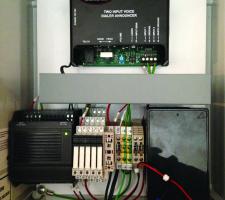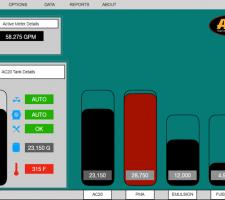How asphalt plant control add-ons make operation easier while reducing costly downtime - *Carlos Cardenas
The word downtime might as well be a curse word in the asphalt production industry. As any operator will say, unplanned plant shutdowns can end up costing a producer heavily in lost production, not to mention a line of unhappy truck drivers and asphalt customers.
The key is to get ahead of the problem and spot issues before they skyrocket in severity. Fortunately, some asphalt plant manufacturers offer plant control add-ons that streamline the process and make operators’ lives easier, they also sound the alarm on potential problems that could grind production to an abrupt stop if not addressed.
Many plant control upgrades will pay for themselves just by preventing a single unplanned shutdown.
Human machine interface (HMI) controls replace manual switches with a programmable logic controller (PLC)-based system. These feature a monitor and mouse or touchscreen, providing one of the easiest ways to clean a control house, ensure fast troubleshooting and streamline information. Asphalt plants often have dozens or even hundreds of switch wires. An HMI can help reduce the number of wires to just a few paired with a communication cable.
The technology opens the door to more automation, such as automated start-up with a single click. More information is also available visually, as any number of readouts can be programmed to display on the HMI.
The change can assist in reducing downtime. Replacing hundreds of wires with one can cut the time spent figuring out the issue by more than half. This allows operators to quickly fix the problem or place the parts order to reduce downtime and can also cut service costs.
In addition, if the system is connected to the internet, some asphalt plant manufacturers offer online troubleshooting, allowing engineers to provide remote assistance, saving time and often eliminating the need for a site visit, with further cost savings.
There is a misconception that replacing hardwired switches and buttons with monitors and touchscreens leaves operations at the mercy of technology and if an issue occurs, such as a frozen screen or broken communication cable, a full plant shutdown is imminent. However, the PLC is running the plant in HMI control systems, so operators can typically replace a cable or restart the HMI without interruptions to production.
A call box (or alarm box or alarm dialler) is programmed to call box personnel in the event of an issue at the plant. While the device can be tied to most systems, operations most often use it to monitor asphalt tank temperature. A producer can experience significant downtime if an asphalt tank heater fails on a cold evening. This is because some tanks can take days to reach the temperature where production can resume, resulting in costly lost production. If notified immediately of a heater problem or asphalt tank temperature drop, an operation can quickly address the issue.
A variety of customisations are available, depending on the manufacturer. These can include automated alerts via text messages or phone calls to quickly alert operations to specific problems with other systems.
A digitised fuel meter that measures fuel consumption is another useful add-on that can pay for itself by catching costly problems. Checking the read-out on the side of the fuel tank or from the control house is safer than having a worker stand on top of the tank to use a stick and tape measure to read fuel levels.
The benefit is that it shows if too much or too little fuel is being used. Changes in fuel consumption can help determine if there are problems such as a need for burner maintenance, high aggregate moisture content, and high pollution. If not caught quickly, additional harmful pollutants can lead to plant shutdown by the authorities. High fuel use can also affect product quality. If a burner is overloaded, some fuel can get through unburnt and mixed in with the asphalt. This may not be noticed immediately and the result could be premature deterioration of a roadway, as well as penalty fees.
Tank level meters are a useful device and come in a variety of types, including pressure gauges and radar. Used on both asphalt and fuel tanks, these show how much material is in each, which an operator can monitor from the control room instead of walking out to the tanks to check the levels and is of benefit on busy days. A shutdown may result if the levels sink too low without the operator noticing and ordering material in time.
Operators should note that, although some storage tanks may have extra ports for installing a tank level meter, it is not always possible without modifications. Particular care has to be taken when work is carried out to fuel and asphalt tanks, including emptying and venting to clear any volatile flammable material.
An Amp meter system can help catch small problems before they become larger and more costly. These read current on select motors to determine how hard each is working, showing the information in the control house on a monitor. As with a fuel meter, an Amp meter can reveal changes in consumption and if a motor starts using more power than before, it highlights a problem.
For example, if a drag conveyer typically using 75-80A starts drawing 85A, something is wrong. The motor may be having trouble moving material, something may be plugged up or paddles can be worn. An early warning allows operators to fix or replace parts before something large breaks and the plant is forced to shut down for repairs. An operation may notice if the electricity bill increases but the Amp meter highlights precisely where the issue is occurring, speeding up troubleshooting.
Whether for monitoring fuel or power consumption or for quickly notifying an operation of a problem, many plant control house add-ons can more than pay for themselves through prevented downtime and headaches. Many asphalt plant manufacturers are willing to customise add-ons to each specific plant to ensure a high ROI and maximum uptime.












